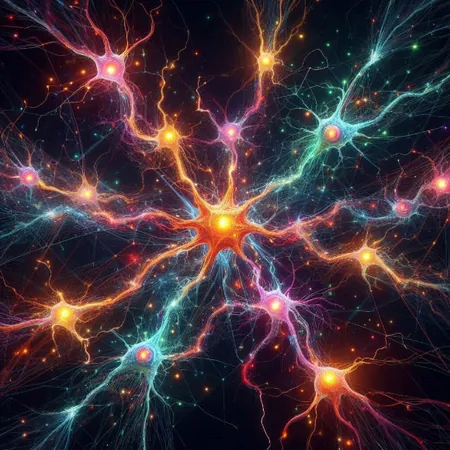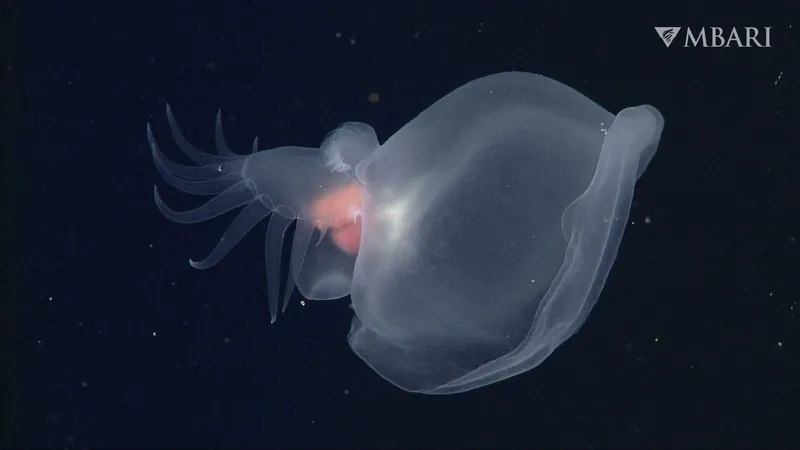
Revolutionary Study Unveils 16 Distinct Neuronal Types Behind Human Touch Perception!
2024-11-06
Author: Noah
Introduction
In an astonishing breakthrough led by researchers from the University of Pennsylvania, Karolinska Institute, and Linköping University, scientists have unveiled a detailed map of the human sense of touch that could redefine our understanding of bodily sensations.
The Somatic Sensation System
The somatic sensation system allows us to perceive touch, temperature, and pain, leading to a common assumption that each sensation is linked to a specific type of neuron. However, this groundbreaking study flips that idea on its head, revealing a much more intricate network of sensory processing at play.
Research Gaps
Dr. Wenqin Luo from the University of Pennsylvania emphasized the gaps in existing research, saying, “Most of what we know about the nervous system comes from animal studies, but are these findings applicable to humans?” Their research aims to bridge this gap through a comprehensive analysis of human neurons.
Methodology
By utilizing deep RNA sequencing techniques, the researchers classified neurons based on their genetic expression profiles, leading to the identification of 16 human-specific neuronal types. This is the first time that the molecular characteristics of these neurons have been directly linked to their functions in real-time.
Findings
Examining neuronal response through cutting-edge microneurography, scientists were able to monitor individual neurons while stimulating them with temperature variations, touch sensations, and certain chemicals. Remarkably, one distinct type of neuron, known to respond to pleasant touch, also showed sensitivity to heating and capsaicin—the active component in chili peppers. This finding poses intriguing questions about our perception of sensation; typically, capsaicin activates pain-sensing neurons, so the response was a surprising revelation.
Temperature Sensation
Moreover, researchers have discovered that this same neuron type also exhibits reactions to cooling, despite not expressing the typical proteins associated with cold perception, suggesting the existence of yet-to-be-discovered mechanisms for sensing temperature changes.
Significance of the Findings
Dr. Håkan Olausson of Linköping University expressed the significance of their findings, stating, "For ten years, we’ve been listening to nerve signals from these neurons, but we lacked insight into their molecular makeup. Now, we can link stimulation to protein expression, marking a significant leap forward in our understanding."
Complexity of Sensory Processing
Further analysis revealed that some pain-sensing neurons activated non-painful cooling sensations, complicating the previous notion that neuron function is specific and isolated. As Dr. Saad Nagi pointed out, "This study indicates much more complexity in sensory processing than previously recognized."
Comparative Analysis
When comparing the neuronal types among humans, mice, and macaques, the researchers found remarkable similarities, but also critical differences. Humans possess a greater number of rapidly conducting pain-sensing neurons, which relay signals to the brain much quicker than their mouse counterparts. This heightened speed is likely a reflection of the increased distances between sensory receptors and the brain in larger bodies, underscoring the need for swift responses to potential injuries.
Conclusion
Published in Nature Neuroscience, this study not only advances our understanding of touch and pain but may also contribute to the development of innovative pain management therapies and interventions. The potential implications are significant, opening doors to a deeper exploration of how we interact with our environment and process our experiences. Keep an eye on this evolving research as it could pave the way for groundbreaking discoveries in neuropathology and sensory science!









 Brasil (PT)
Brasil (PT)
 Canada (EN)
Canada (EN)
 Chile (ES)
Chile (ES)
 España (ES)
España (ES)
 France (FR)
France (FR)
 Hong Kong (EN)
Hong Kong (EN)
 Italia (IT)
Italia (IT)
 日本 (JA)
日本 (JA)
 Magyarország (HU)
Magyarország (HU)
 Norge (NO)
Norge (NO)
 Polska (PL)
Polska (PL)
 Schweiz (DE)
Schweiz (DE)
 Singapore (EN)
Singapore (EN)
 Sverige (SV)
Sverige (SV)
 Suomi (FI)
Suomi (FI)
 Türkiye (TR)
Türkiye (TR)